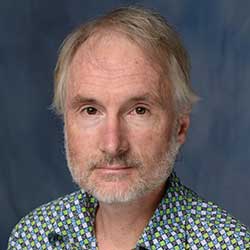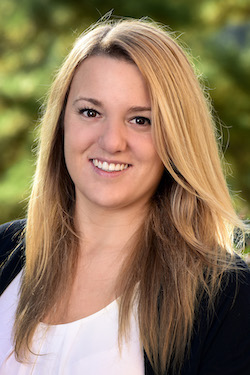New Approaches and Alternatives for Toxicity Testing: Session II - Tools for Assessing Exposure and Toxicity
Sponsored by: NIEHS Superfund Research Program
Archived: Wednesday, May 23, 2018
The NIEHS Superfund Research Program (SRP) is hosting a Risk eLearning webinar series highlighting research that may be useful as new approaches and methodologies for evaluating the safety of chemicals. Assessing environmental exposure and identifying health hazards are both important aspects of chemical safety evaluation, and rapid screening tools may be used to improve our understanding of both aspects. In the second session, speakers will discuss tailoring read-across methodology to address chemical evaluation challenges, explore analysis of environmental toxicants in the environment, and highlight genetic screening tools to examine mechanisms of toxicity.
This series coincides with recent initiatives found in the U.S. Environmental Protection Agency's New Draft Strategic Plan and the National Toxicology Program’s Strategic Roadmap.
James W. Rice, Ph.D., a senior environmental scientist at Gradient and former Brown University SRP Center trainee, will discuss chemical safety evaluation challenges of the Lautenberg Chemical Safety Act (LCSA) and potential ways to address these challenges. LCSA joins an array of regulatory schemes that require substantial data on chemical health hazard prior to chemical registration and sale. There are consumer product manufacturers, however, for whom product evaluation and associated chemical safety fall outside the scope of these large chemical registration programs, but who are interested in specific health endpoints related to use of their products or proposed products. In response, Rice and colleagues have developed and validated a read-across framework aimed specifically at filling dermal sensitization and irritation data gaps. The framework quantifies structural similarity between proposed surrogates and target chemicals and shows an expected common mode of action via structural alerts and relevant chemical properties.
Erin Baker, Ph.D., a bioanalytical chemist at the Pacific Northwest National Laboratory and Texas A&M University SRP Center grantee, will discuss novel approaches to rapid analysis of environmental samples. Surveillance of chemical exposure requires analytical platforms offering rapid measurements, high sensitivity, efficient separations, wide dynamic ranges, and applicability to a broad chemical space. Baker and colleagues have developed a platform and pipeline that meets these needs by combining solid phase extractions with ion mobility spectrometry and mass spectrometry (SPE-IMS-MS). This exposomics approach overcomes many challenges for large scale exposure assessments and is a viable way of screening environmental conditions and patient cohorts for insight into human exposure and disease mechanisms.
Chris Vulpe, M.D., Ph.D., a professor at the University of Florida, Gainesville, in the Center for Environmental and Human Toxicology, will describe his work on the application of CRISPR-Cas9 genome-editing tools in the evaluation of chemical hazards. An ongoing revolution in gene editing capabilities is enabling new approaches to assess the biological effects of chemical exposure. The interrogation of the functional role of genes in response to a chemical through CRISPR-Cas9 targeting provides a new, potentially transformative, approach to chemical hazard assessment.
Brittany Trottier, an SRP health specialist, will moderate the session.
Accessibility, Recording, and Content Disclaimer
Rehabilitation Act Notice for Reasonable Accommodation
It is EPA's policy to make reasonable accommodation to persons with disabilities wishing to participate in the agency's programs and activities, pursuant to the Rehabilitation Act of 1973, 29 U.S.C. 791. Any request for accommodation should be made to Sara Amolegbe at 919-213-4906 or samolegbe@michaeldbaker.com, preferably one week or more in advance of the webinar, so that EPA will have sufficient time to process the request. EPA would welcome specific recommendations from requestors specifying the nature or type of accommodation needed. Please note that CLU-IN provides both alternate phone call-in options and closed captioning for all webinars, and requests for these specific accommodations are not necessary.
Webinar Recording
By participating in this CLU-IN webinar, you automatically agree to authorize recording of audio and visual content presented during this live event and consent to subsequent use of this recording in the public domain by the U.S. Environmental Protection Agency. This recording may include questions, comments and poll responses provided by you during the live event in addition to your name, voice, image or likeness. This recording will be made available after the conclusion of the live event as part of the CLU-IN webinar archives, and will remain available indefinitely. If you do not wish to consent to the recording, please do not join the live event, and contact Jean Balent at 202-566-0832 or balent.jean@epa.gov to discuss your concerns.
Content Disclaimer
This webinar is intended solely to provide information to the public. The views and opinions expressed as part of this webinar do not necessarily state or reflect those of the U.S. Environmental Protection Agency. It is not intended, nor can it be relied upon, to create any rights enforceable by any party in litigation with the United States, or to endorse the use of products or services provided by specific vendors. With respect to this webinar, neither the United States Government nor any of their employees, makes any warranty, express or implied, including the warranties of merchantability and fitness for a particular purpose, or assumes any legal liability or responsibility for the accuracy, completeness, or usefulness of any information, apparatus, product, or process disclosed, or represents that its use would not infringe privately owned rights.
Presenters:
 James W. Rice, Ph.D., Gradient (jrice@gradientcorp.com or 617-395-5000)
James W. Rice, Ph.D., Gradient (jrice@gradientcorp.com or 617-395-5000)
James W. Rice, Ph.D., is an environmental scientist specializing in contaminant transport and source identification, read-across assessment, and the evaluation of organic compound contaminants. He applies his expertise to environmental cost allocation, site remediation, groundwater assessment, insurance cost recovery, litigation support, and chemical compliance.
Before joining Gradient, Rice was a postdoctoral research associate and state agencies liaison at the Brown University SRP Center, where he served as a knowledge broker between the Brown SRP Center and its government and business stakeholders. During his doctoral and postdoctoral work, Rice evaluated the thermodynamics and phase behavior of polycyclic aromatic hydrocarbon (PAH) mixtures and used passive samplers to monitor petroleum hydrocarbons in an oil-contaminated river. He received his Ph.D. in chemical engineering and Sc.M. in engineering from Brown University, and his B.S. in chemical engineering from Northeastern University.
 Erin Baker, Ph.D., Pacific Northwest National Laboratory (Erin.Baker@pnnl.gov or 509-371-6219)
Erin Baker, Ph.D., Pacific Northwest National Laboratory (Erin.Baker@pnnl.gov or 509-371-6219)
Erin Baker, Ph.D., is a bioanalytical chemist with more than 18 years' experience and >100 publications utilizing ion mobility spectrometry in conjunction with mass spectrometry (IMS-MS) to study environmental and biological systems. In the last 12 years, she has worked primarily to develop high-throughput multi-dimensional analyses to quickly study numerous samples in a short time period without losing valuable information. Baker is also working with various informatics teams to design and implement software tools that automatically analyze these complex datasets.
 Chris Vulpe, M.D., Ph.D., University of Florida (cvulpe@ufl.edu or 352-294-5821)
Chris Vulpe, M.D., Ph.D., University of Florida (cvulpe@ufl.edu or 352-294-5821)
Chris Vulpe, M.D., Ph.D., is a Professor at the University of Florida, Gainesville in the Center for Environmental and Human Toxicology. Dr. Vulpe’s group uses systems level approaches in eukaryotes from yeast to people to identify the functional components that respond to and modulate the consequences of environmental stressors. Currently, his laboratory has been utilizing genome-wide CRISPR screens to understand the mechanisms of toxicity of environmental chemicals. Dr. Vulpe is an author or co-author on more than 125 papers in peer-reviewed journals and books. Dr. Vulpe received his M.D. and Ph.D. from the University of California, San Francisco.
Moderator:
 Brittany Trottier, Superfund Research Program, National Institute of Environmental Health Sciences (brittany.trottier@nih.gov)
Brittany Trottier, Superfund Research Program, National Institute of Environmental Health Sciences (brittany.trottier@nih.gov)
Brittany Trottier received her Master's in Public Health from George Washington University and her BA in Chemistry from Adrian College. She is currently a Health Specialist with the Superfund Research Program (SRP) at the NIEHS. For the SRP, she is the lead for the CareerTrac system, oversees the community engagement cores, is co-lead for the NIEHS-WHO Coordinating Center (WHOCC) e-waste focus area, and supports the lead for the children's environmental health focus area for the NIEHS WHOCC.
Webinar Slides and References:
- Slide Presentation for James W. Rice, Ph.D., Gradient:
- Slide Presentation for Erin Baker, Ph.D., Pacific Northwest National Laboratory:
- Slide Presentation for Chris Vulpe, M.D., Ph.D., University of Florida:
Webinar Slides and References:
- Slide Presentation for James W. Rice, Ph.D., Gradient:
- Slide Presentation for Erin Baker, Ph.D., Pacific Northwest National Laboratory:
- Slide Presentation for Chris Vulpe, M.D., Ph.D., University of Florida:
Additional Resources:
- NIEHS Superfund Research Program Risk e-Learning Webinar Series: New Approaches and Alternatives for Toxicity Testing
- Expanding the Toolbox: Hazard-Screening Methods and Tools for Identifying Safer Chemicals in Green Product Design
- ChemMine tools: an online service for analyzing and clustering small molecules
- ChemIDplus: A TOXNET database
- Toxmatch
- Toxtree - Toxic Hazard Estimation by decision tree approach
- A Structural Examination and Collision Cross Section Database for Over 500 Metabolites and Xenobiotics Using Drift Tube Ion Mobility Spectrometry
- An Interlaboratory Evaluation of Drift Tube Ion Mobility-Mass Spectrometry Collision Cross Section Measurements
- SPE-IMS-MS: An automated platform for sub-sixty second surveillance of endogenous metabolites and xenobiotics in biofluids
- CRISPR Plasmids and Resources
- Functional genomic screening approaches in mechanistic toxicology and potential future applications of CRISPR-Cas9
- Multiplex genome engineering using CRISPR/Cas systems
- Genetic screens in human cells using the CRISPR-Cas9 system
If you have a suggested topic or idea for a future CLU-IN internet seminar, please contact:
Technology Integration and Information Branch
PH: 202-566-0832 | Email: balent.jean@epa.gov
Technology Integration and Information Branch
PH: 202-566-0875 | Email: adam.michael@epa.gov





